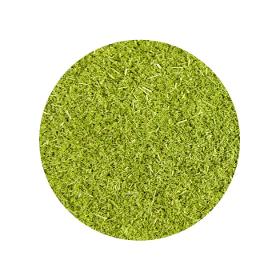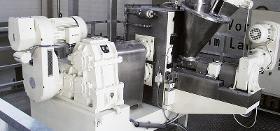- europages
- >
- COMPANIES - SUPPLIERS - SERVICE PROVIDERS
- >
- plant powders
Results for
Plant powders - Import export

VEHGRO B.V
Germany
"Origin Lemon grass, also known as Sereh, is a tropical plant from Southeast Asia with a strong citrus flavour and fragrance. The herb is widely used in Indonesian, Thai, Surinamese and Vietnamese cuisine. This lemongrass powder comes from Egypt. Use ground lemongrass (Cymbopogon citratus) is widely used in soups and curries, but also tastes very good with poultry, beef and fish. It has a fresh-sour flavour that gives depth to spicy or sweet dishes. Drying and grinding the stems of the plant produces a soft green powder. Ground lemongrass is more concentrated and has a stronger flavour than fresh lemongrass, so be careful with the amount of powder and add it carefully to your dish. You can also make tea from lemongrass. In Curaçao, this tea has been enjoyed for decades. It also freshens your breath immensely!"
Request for a quote
VEHGRO B.V
Germany
"Origin and History Barley Grass Barley grass is a grass that grows in the EU. Harvest Barley Grass As the plant gets ready for the reproductive phase, all the nutrients accumulate in the shoots. That is the time to harvest. We process these nutritious shoots into our wheatgrass powder. The barley plant has been cultivated for thousands of years and was one of the first crops to be domesticated for human use. It has been shown that the ancient Egyptians harvested both the barley and the young shoots, and there are references to the use of the barley plant as an important religious sacrifice in the Bible. Healthy Properties Barley Grass and Applications Barley grass is rich in fiber, protein, iron, copper, amino acids, enzymes and chlorophyll. Protein contributes to the growth and maintenance of muscle mass and maintaining strong bones. Copper transports oxygen through the body, but also supports cognitive functions, the immune system and helps w…"
Request for a quote
VEHGRO B.V
Germany
"The (sub)tropical world traveler Ginger is grown in almost every tropical or subtropical country. Ginger is a cultivated root. This means that it does not occur naturally in the wild. Yet ginger has been around for a very long time. It was first cultivated by the Austronesians in maritime Southeast Asia, around 3000 years before Christ. Thanks to a prehistoric migration by sea, the Austronesians extended their territories from Madagascar to Hawaii until 1500 BC. And during these migrations the ginger root came along. Around the first century BC, ginger first arrived in Europe via India. Nowadays the majority of the world's ginger production also takes place in India. Production process Ginger The plant is harvested when the leaves have died off in autumn. The rhizomes are dug up and dried in the shade. Younger roots are harvested to be used fresh or pickled. Older rhizomes are ground to obtain ginger powder. Ginger plants are propagated by tearing them. <…"
Request for a quote
RIPPERT ANLAGENTECHNIK GMBH & CO. KG
Germany
Heating technology with a future The calculation is simple, the technology successful. Efficient surface drying is achieved with biomass in Rippert plants. Together with the Hargassner company from Austria, a specialist for heating with biomass, and the proven Rippert plant know-how, the technology is now marketable and has gone into production. The demanding drying characteristics in a powder-coating plant are compatible with the process and work perfectly. A future-orientated heating technology with considerable economic and ecological benefits – the experts are unanimous in that. Wood pellets or wood chips are the inexpensive energy suppliers. They are valuable waste products that result from the processing of domestic timbers. Heating with wood chips – without intermediate heat transfer media such as thermal oil • Environmentally friendly and CO2-neutral • fully automatic boiler cleaning and ash discharge Maximum financial saving potentials are realised with this energy carrier. Wood chips, chopped to a transportable size and dried by the supplier, are stored in the storeroom near the plant. It can be located on the same level or lower. A tried-and tested transport system consisting of a floor agitator with springs and discharge auger carries the wood chips reliably into the plant. Here it acts as a fuel with maximum convenience. If the calorific value equivalents are examined, we see that 1,000 litres of fuel oil is equivalent to 12 m³ of wood chips. The ratio is the same for 1,000 m³ of natural gas. Heating with wood pellets - without intermediate heat transfer media such as thermal oil Wood pellets are true energy bundles. They consist of natural wood and are made by compressing sawdust, which is produced in large quantities every day in the industry. As a biomass they are the alternative to wood chips and are just as advantageous from an economical point of view. Pellets have the smallest volume and are conveyed dust-free and without odours from storage containers to a storage vessel next to the plant. They are transported into the combustion chamber via a rotary vane feeder and feed auger. For comparison: 1,000 l fuel oil = 2 t pellets 1,000 m³ natural gas = 2 t pellets 1,000 l liquefied gas = 1.32 t pellets Advantages • Reduction in energy costs Heating cost comparison (reference = 1,000 l fuel oil)
Request for a quote
BIEGLO GMBH
Germany
BIEGLO offers high temperature resistant and flame retardant fibers. The application is similiar to meta-aramid, but PI fibers have its own advantages. The long-term service temperature is 260℃. The decomposition temperature is 560℃. The LOI is 38%, it means it is non-flameble fiber. The Dexnyl Polyimide fibers are applicable in many products, but they are used best in niche-applications with extreme standards for the material: 1- FR Protective clothing: e.g. military fligth clothing, flame resistand underwear, firefighter uniform etc. 2- High temperature filtration and industrial insulation: e.g. dedusting filtration for cement factories, steel or powder plants, air filtration for painting area operated at more than 300°C . 3- Composite material: taking advantage of insulation, flame retardance and high emperature resistance, chopped fiber can be used as reinforced material.
Request for a quote
A. EBBECKE VERFAHRENSTECHNIK AG
Germany
Roll Compactor The roll compactor plant – the solution for low-dust products With our roller compactor plants powdered components especially low in dust can be condensed into granulate. In this case, several components with divergent properties can be mixed and granulated together. This way our roller compactor plant allows an efficient complete production of granulates from powder mixtures. The plants used at Ebbecke Verfahrenstechnik are equipped with pre-and fine granulators, while at the same time fine particles are fed back via post-screening. All granulation plants are continuously adjustable in their pressing force, in addition part of the plants are equipped with pre-compression by means of a vacuum intake. Technical data Granulation performance: 5 - 500 kg/h Product intake by means of: Pre-compressor screw (two-step) and vacuum intake (partial) Product-contacting parts: Stainless steel Feeding from: Big Bag, oktabin, bagged goods, cardboard boxes, drums Platform const
Request for a quoteDo you sell or make similar products?
Sign up to europages and have your products listed
Results for
Plant powders - Import exportNumber of results
6 ProductsCountries
Company type